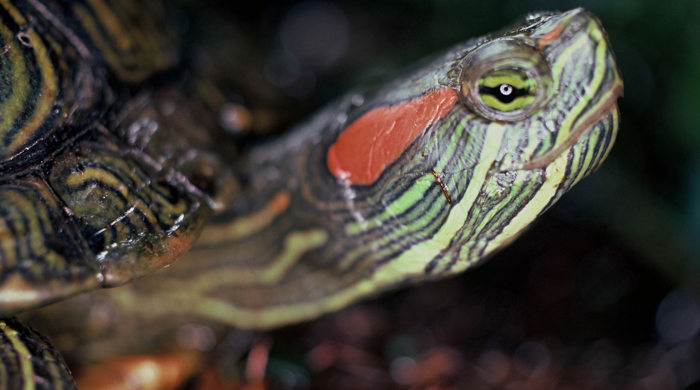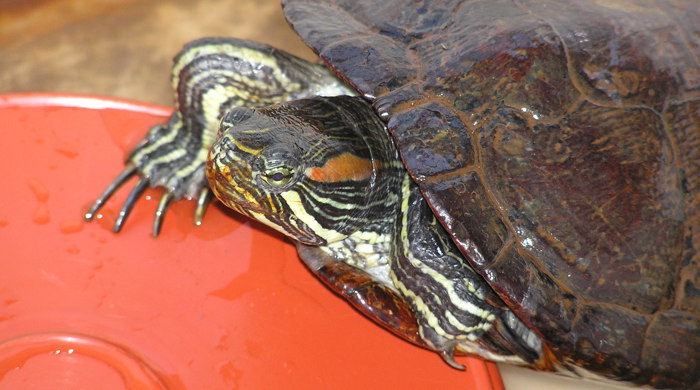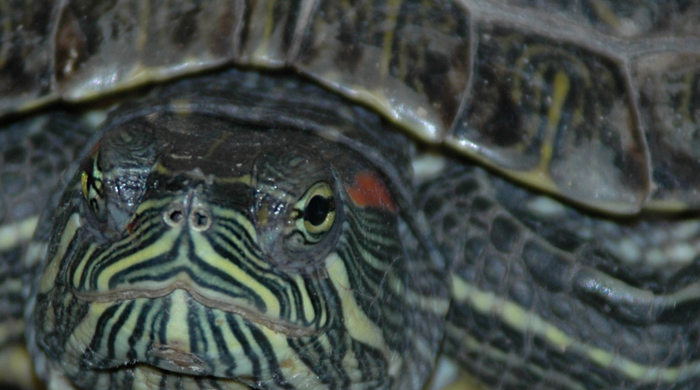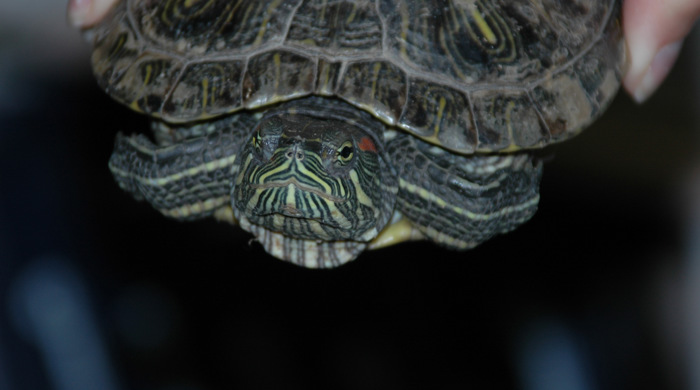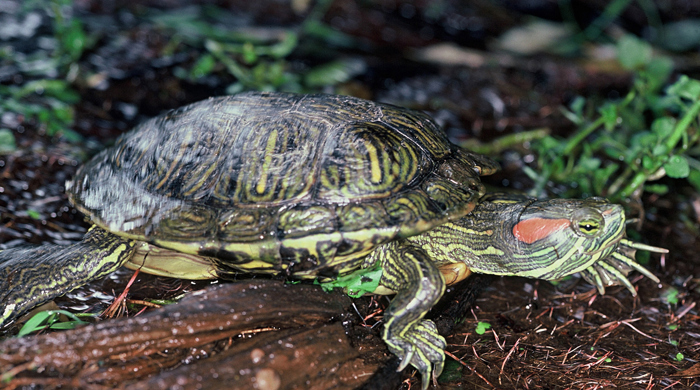Trachemys scripta elegans, t. scripta scripta, t. scripta troostii
Red-eared slider
Family: Emydidae
Origin: North America
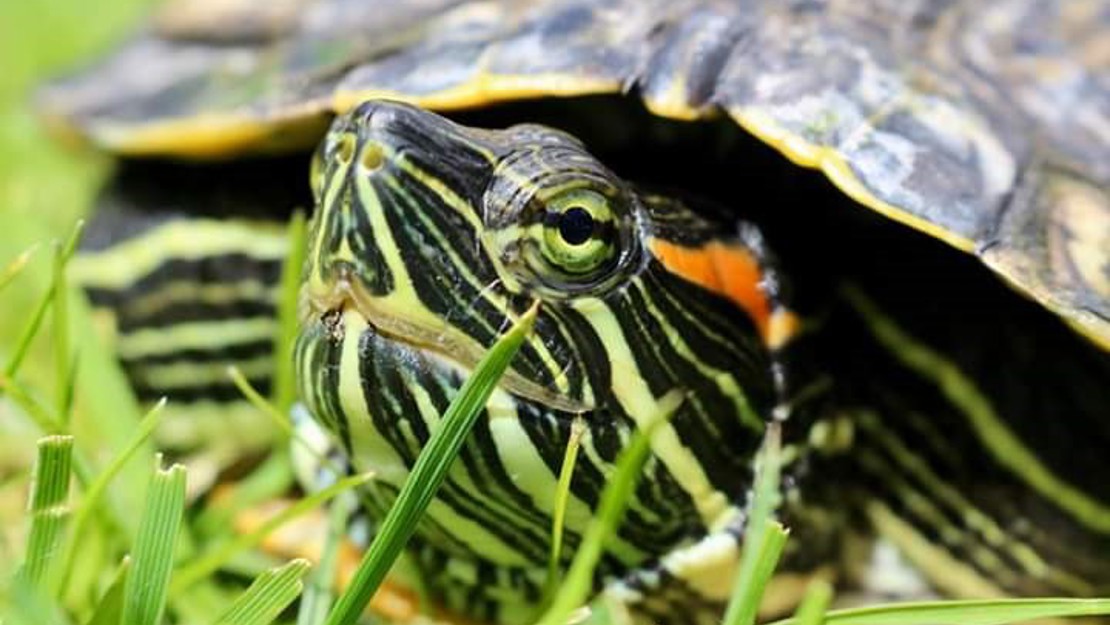
Regional Pest Management Plan (RPMP) status
- Aotea — Exclusion
- Whole region — Sustained control
- Hauraki Gulf Controlled Area Notice pest
General description
Turtle with olive to brown carapace patterned with yellow spots or stripes and distinctive red stripe behind eyes.
What you need to know
To help protect our environment:
- you must not release any red-eared slider from containment within the Auckland region
- you must not move any red-eared slider to Aotea/Great Barrier Island group
- you must not breed, distribute or release any red-eared slider on Aotea/Great Barrier Island group
- you will not be allowed to breed, distribute or sell any red-eared slider or other sub-species of Trachemys scripta within the Auckland region from 1 September 2022.
- You are however still allowed to retain any existing individuals you already own. You can also take these animals to the vet, they can move with you if you move house, and you can take them to stay with someone else while you’re on holiday. You just need to keep them securely contained so they can’t escape into the wild.
- If you pet-sit / provide temporary accommodation for other people’s animals, you’re also covered for receiving them, as long as you keep them securely contained while they are staying with you. However, if you receive animals on a more permanent basis, such as rescue centres, where ownership is changing hands, then you need to apply for an exemption for this activity. You can apply for free using this application form.
Habitats
Still or slow-moving waterbodies, ponds, lakes, wetlands, rivers, drainage ditches.
Impact on environment
Eats plants, zooplankton, molluscs, fish, frogs, crustaceans, insects, gastropods, birds and small reptiles. May transmit diseases to native reptiles and amphibians. Basking behaviours may displace nesting wetland birds. May reduce water quality.
Control
Management
If you have pet red-eared sliders, make sure they’re securely contained to avoid accidental escapes. If you are no longer able to look after your pet red-eared slider, find someone who is prepared to give it a lifetime home, or contact a relevant pet shop or animal rescue organisation to get it rehomed.
Never release a red-eared slider into the wild – your pet may be unable to find the food and shelter it needs, and it also puts our native species at risk.
If you see a red-eared slider in the wild, record it on iNaturalist or email Auckland Council at pestfree@aucklandcouncil.govt.nz.
